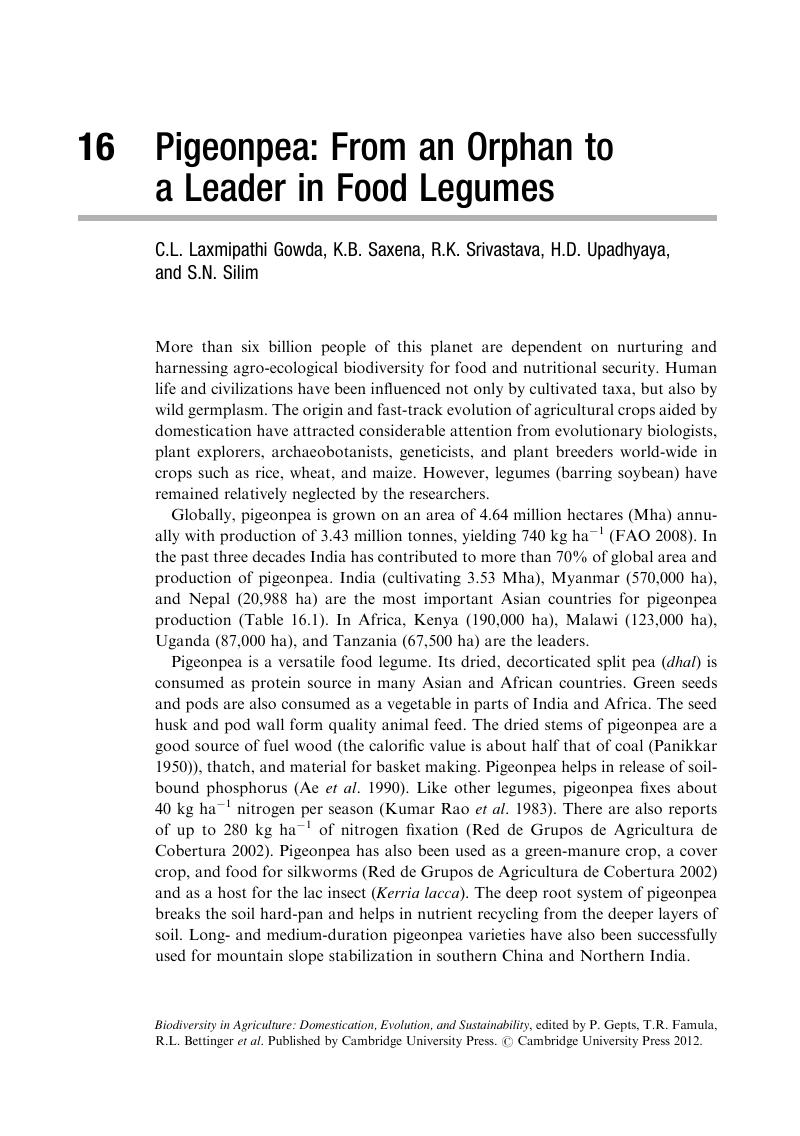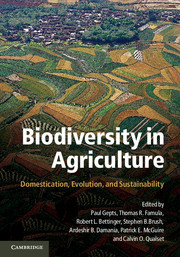Book contents
- Frontmatter
- Contents
- Tables
- Figures
- Foreword
- Contributors
- Acknowledgments
- Introduction: The Domestication of Plants and Animals: Ten Unanswered Questions
- 1 The Local Origins of Domestication
- Section I Early Steps in Agricultural Domestication
- Section II Domestication of Animals and Impacts on Humans
- Section III Issues in Plant Domestication
- 13 The Dynamics of Rice Domestication: A Balance between Gene Flow and Genetic Isolation
- 14 Domestication of Lima Beans: A New Look at an Old Problem
- 15 Genetic Characterization of Cassava (Manihot esculenta Crantz) and Yam (Dioscorea trifida L.) Landraces in Swidden Agriculture Systems in Brazil
- 16 Pigeonpea: From an Orphan to a Leader in Food Legumes
- Section IV Traditional Management of Biodiversity
- Section V Uses of Biodiversity and New and Future Domestications
- Index
- References
16 - Pigeonpea: From an Orphan to a Leader in Food Legumes
Published online by Cambridge University Press: 05 June 2012
- Frontmatter
- Contents
- Tables
- Figures
- Foreword
- Contributors
- Acknowledgments
- Introduction: The Domestication of Plants and Animals: Ten Unanswered Questions
- 1 The Local Origins of Domestication
- Section I Early Steps in Agricultural Domestication
- Section II Domestication of Animals and Impacts on Humans
- Section III Issues in Plant Domestication
- 13 The Dynamics of Rice Domestication: A Balance between Gene Flow and Genetic Isolation
- 14 Domestication of Lima Beans: A New Look at an Old Problem
- 15 Genetic Characterization of Cassava (Manihot esculenta Crantz) and Yam (Dioscorea trifida L.) Landraces in Swidden Agriculture Systems in Brazil
- 16 Pigeonpea: From an Orphan to a Leader in Food Legumes
- Section IV Traditional Management of Biodiversity
- Section V Uses of Biodiversity and New and Future Domestications
- Index
- References
Summary

- Type
- Chapter
- Information
- Biodiversity in AgricultureDomestication, Evolution, and Sustainability, pp. 361 - 374Publisher: Cambridge University PressPrint publication year: 2012
References
- 5
- Cited by

